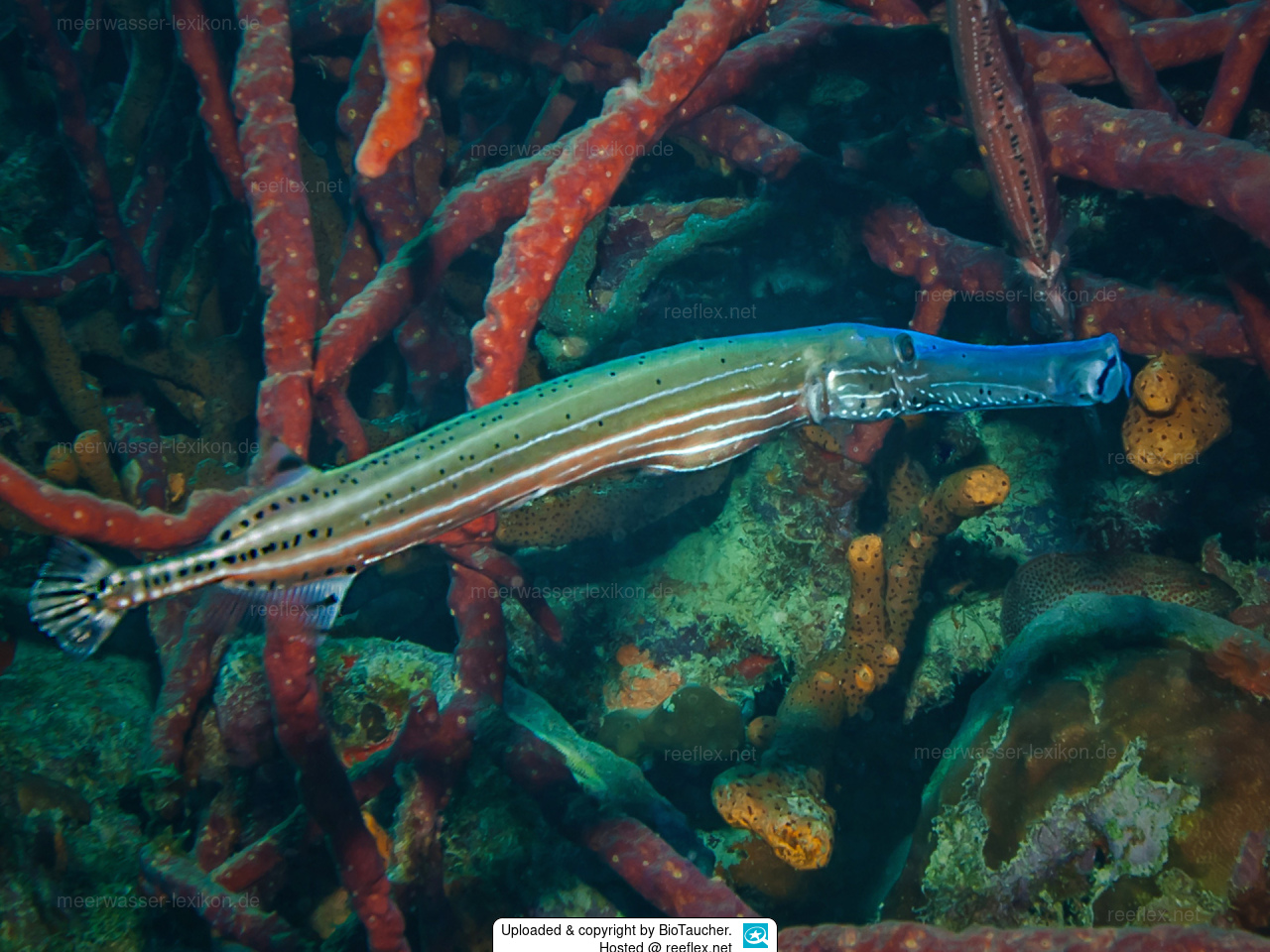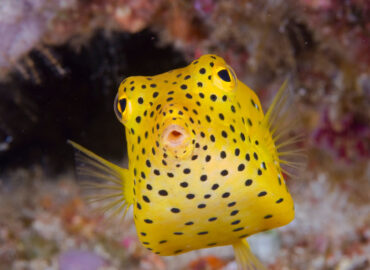The trumpetfishes are three species of highly specialized, tubular-elongated marine fishes in the genus Aulostomus, of the monogeneric family Aulostomidae. The trumpetfishes are members of the order Syngnathiformes, together with the seahorses and the similarly built, closely related cornetfishes.[4][5]
The generic name, Aulostomus, is a composite of two Greek words: aulos, meaning flute, and stoma, meaning mouth, because the species appear to have tubular snouts.[4] “Flutemouth” is another less-common name for the members of the family (although this word is more often used to refer to closely related cornetfishes of the family Fistulariidae).
Trumpetfishes are found in tropical waters worldwide, with two species in the Atlantic and one in the Indo-Pacific. They are mostly demersal reef-dwellers, where one species seems to prefer rocky substrate.
The trumpetfish is a solitary, stalking predator. Using stealth, it gains a position close to its prey and, attacking with a short darting movement, sucks up the victim with a sudden expansion of the tubular snout. A nünü sometimes accompanies schools of grazing surgeonfishes or uses the body of a large parrotfish as cover so that it can prey on small organisms driven from cover as the herbivores feed on seaweeds.





 WhatsApp us
WhatsApp us